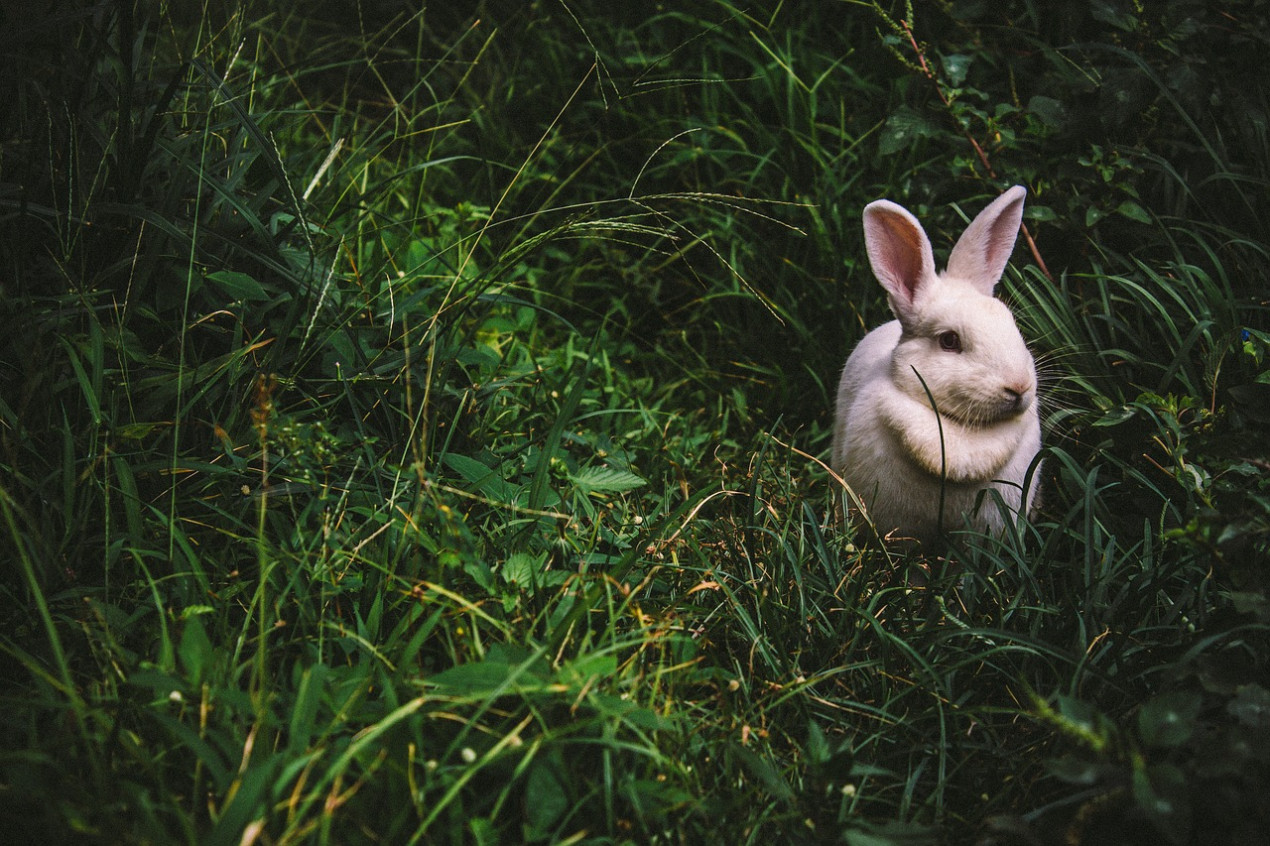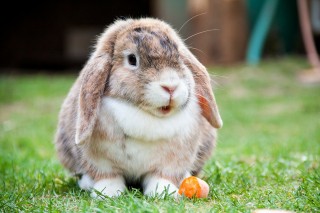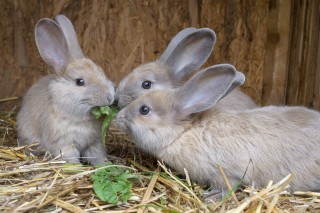We're here to help

What is rabbit gut stasis?
Gut stasis is a common, potentially life-threatening condition affecting rabbits. It’s also known as ileus, gastrointestinal stasis and GI stasis. It occurs when the normal, regular, wave-like movements of the intestines either slow down or stop altogether. Bad bacteria can then build up within the gastrointestinal tract resulting in bloating. This makes the bunny more reluctant to eat and drink which, in turn, causes their condition to worsen. Affected rabbits quickly become dehydrated and starved of essential nutrients. As the condition progresses, food or faecal material within the intestines starts to dry out becoming firm and very difficult to pass. This can lead to an obstruction.

My rabbit's not eating, what should I do?
Rabbits are a prey species and are experts in hiding any signs of illness or weakness that may result in them being killed by another animal. This instinct still exists in domestic pets which makes the identification of ailments within bunnies challenging. It’s crucial that you monitor your bunny very closely for any changes in behaviour, appetite, passage of urine or faeces. If you spot any signs of gut stasis in your rabbit you should call your vet or, if it’s out of hours, your nearest Vets Now pet emergency hospital or clinic.
What causes rabbit gut stasis?
The gastrointestinal tract of rabbits is very delicate and responds acutely to any disease process within the body. The cause of the gut stasis may be from another part of the body. Common causes of gut stasis in rabbits include:
- Pain from dental infections, sharp spikes on the teeth, urinary tract infections or gas within the guts caused by an inadequate diet
- Stress from a change in environment or loss of a partner, or even something like fireworks
- Lack of water
- Lack of exercise
- Mobility problems caused by obesity, arthritis
- Long term use of antibiotics or the use of unsafe antibiotics
- Low fibre, high carbohydrate/fat diet
What are the symptoms of gut stasis in rabbits?
The initial signs can be quite subtle with your pet maybe sitting quietly, being hunched up or accepting being handled when they are usually quite feisty. Conversely, if your bunny has pain in their belly they may resent being picked up, grunt or grind their teeth. Occasionally you may notice your pet having a larger belly than normal, this indicates bloating of the gastrointestinal organs.
Affected bunnies often stop eating and drinking. They may also pass stools which vary from being small, to loose and malformed and in severe cases no stools at all. Urine production can be variable depending on the degree of dehydration your pet is experiencing, but it’s typically either normal or reduced.
If your pet shows any of these signs it is an emergency and you must contact your veterinary surgeon immediately.

How will the vet diagnose rabbit gut stasis?
At the vet your rabbit will be given a full ‘head to toe’ examination in order to try to identify any potential causes for the gut stasis. In some cases, a cause is never found. However, as long as your bunny responds to treatment and makes a full recovery this is not a problem. But you will need to be very vigilant of your pet’s behaviour in case the problem recurs.
How is gut stasis in rabbits treated?
Depending on the severity of the stasis your bunny can be treated as an outpatient, may be hospitalised and given special medications to help the motility of their guts or may even require surgery to remove a physical obstruction caused by impacted food, faecal material or even fur balls. A simple way to determine the severity of your pet’s condition is to take a blood sample, usually from a vein in their ear and check the glucose level within the blood. As the severity of the gut stasis increases so does the glucose level, which helps vets decide on the level of care your bunny requires. An x ray may also be taken to try and identify the presence of an obstruction or accumulation of gas.
If it is decided that surgery is not required, typically treatment of gut stasis in rabbits would include:
- Medications to promote the movement of your bunny’s intestines
- Fluids either injected under the skin or given as a drip into a vein, usually in the ear
- Pain relief to alleviate the discomfort caused by accumulation of gas
- Nutritional support via either a feeding tube into your bunny’s stomach or by encouraging them to eat their favourite foods
Early and aggressive treatment can result in the full recovery of your rabbit. However, if an underlying cause is identified it is important that it is addressed otherwise there is a very high risk that your rabbit will develop gut stasis again.
The presence of a physical obstruction within the guts which cannot be treated medically and requires surgery carries a much poorer prognosis, however, the vet will discuss all of the options with you at the time of your appointment.
What can I do to prevent stasis?
There are several, simple things that you can do to prevent your rabbit from suffering from gut stasis.
- Ensure your rabbit is receiving a high quality, hay based diet in order to provide them with the fibre they need for a healthy digestive system and also encourage the proper wear of their teeth, thus preventing painful spurs and overgrowths. Speak to your vet for further feeding advice.
- Take your rabbit for regular check ups at their vets so that any underlying health problems, which they may have been hiding, can be identified and treated early.
- Provide an enriched, stress free environment. Rabbits are sociable animals and like companionship, however the sudden introduction or loss of a partner can cause them great stress and upset. It is important that your bunny has sufficient space to run around without feeling threatened by their environment.

